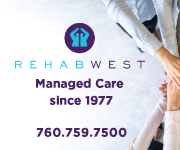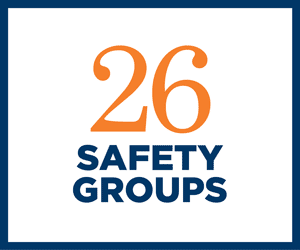Industry Insights
April 26, 2022
Grinberg: A Tech Answer to COVID Presumption?
- State: California
- - 0 shares
In September of 2020, Gov. Gavin Newsom signed into law SB 1159, which created various presumptions for COVID exposures. Some are for the initial outbreak, and some are for certain professions such as law enforcement and health care workers, among others.

Gregory Grinberg
But there’s another section having to do with outbreaks, defined as at least four employees (or 4% of the employees at a specific workplace, whichever is greater) testing positive within a 14-day period.
How is the employer supposed to rebut the presumption of industrial exposure in an outbreak case? Well, we have the tools at our disposal that existed before the outbreak: discovery such as depositions, social media investigation and investigator interviews. But, despite the best efforts of Sacramento, the market tends to respond when there is a need.
A company called Estimote has possibly built a better mousetrap by creating collar tags that are worn by employees in the workplace. The collar tags are supposed to vibrate when two tags are within 6 feet of each other, and also provide contact tracing. So, if Jill at the office reports a positive COVID test, Jack in human resources can check her history for the last 14 days and show which other devices have been within 6 feet of her.
Is this a certainty? Of course not. Employees can still be exposed to COVID by customers or visiting vendors who probably won’t be wearing these devices. But the presumption is rebuttable, and perhaps this evidence will provide some basis to offer a denial.
While it’s possible that an employee is infected because of contact at work, neither the workers’ compensation system nor life in general operates on possibility; the standard is always probability. If an employer can effectively demonstrate that an applicant did not have contact within 6 feet of any other COVID-positive employees in the past 14 weeks, doesn’t that drastically reduce the likelihood that the exposure occurred at work?
Ultimately, employers will have to weigh the cost of obtaining, setting up, monitoring and, most importantly, enforcing, such a system against the likelihood of reduced workers’ compensation costs.
Gregory Grinberg is managing partner of Gale, Sutow & Associates’ S.F. Bay South office and a certified specialist in workers’ compensation law. This post is reprinted with permission from Grinberg’s WCDefenseCA blog.
Advertisements
Columns
- Montgomery: Sedgwick Tries PPO Discount for Med-Legal (Again) 04/19/24
- Kamin: More Policy Exclusions Would Reduce Losses 04/18/24
- Phillips: It's All Settled 04/17/24
- Snyder: Public Benefit Rules Have Changed, but It Might Not Make a Difference 04/12/24
- Headrick: Clearing Up a Common Misconception 04/11/24
- Snyder: Litigation Guidelines Should Define Four Settlement Triggers 04/10/24
- Kirsch: Depositions of Comp Carrier Employees After Intervening in Third-Party Actions 04/09/24
- Wilson and Bennett: Could AI Have Prevented the Opioid Crisis in Workers' Comp? 04/08/24
- Moore: Pandemic Effect Over in March 2027. Really? 04/05/24
- Geaney: A Brief History of Our State's Workers' Compensation Act 04/04/24
- Kamin and Larres: Significant Panel Decision Clarifies Recon Confusion 04/03/24
- Gelman: Exposed to 'Forever Chemicals' 04/02/24
- Montgomery: Cyberattack Delays Payment of San Francisco Bills 04/01/24
- Young: Indoor Heat Regs in Turmoil 03/29/24
- Langham: Shootings and Compensability 03/27/24
- Geaney: Third-Party Liens Not Always Due Right Away 03/26/24
- Larres: State Supreme Court Denies Review of Our Appellate Win 03/25/24
- Moore: Recordkeeping and Your Remote Premium Auditor 03/22/24
- Switzer: Important Change Coming Soon 03/21/24
- Moore: Basic AI Claims Adjuster Assistant Works Well 03/19/24
Now Trending
- Workers' Compensation News
-
Calif.
Chiropractor Sentenced to More Than
54 Years, Fined…
Posted on Apr 16, 2024
-
Calif. Court
Upholds Summary Dismissal of
Worker's Claims for Retaliation,…
Posted on Apr 17, 2024
-
Calif. Contractor
Pleads Guilty to Underreporting…
Posted on Apr 15, 2024
-
Calif. WCIRB
Approves Recommendation for 0.9%
Rate…
Posted on Apr 18, 2024
-
Calif. Committee
Passes Bill to Revise Poster…
Posted on Apr 19, 2024
-
Ill. Worker Who
Repeatedly Failed to Appear at
Hearings Can't Get Claim…
Posted on Apr 15, 2024
-
Fla. State Joins
Texas in Prohibiting Local
Workplace Safety…
Posted on Apr 16, 2024Joe Paduda says: “All of us in the Worker’s Comp. industry should push to improve…”
-
Neb. Lawmakers
Send Schedule Rating Bill to…
Posted on Apr 15, 2024
-
N.Y. Court: Worker
Should Have Been Denied Leave to
File Late…
Posted on Apr 17, 2024
-
La. Court
Overturns PTD Award for Worker With…
Posted on Apr 17, 2024
Jobs
Upcoming Events
May 5-8, 2024
Risk World
Amplify Your Impact There’s no limit to what you can achieve when you join the global risk managem …
May 13-15, 2024
NCCI's Annual Insights Symposi
Join us May 13–15, 2024, for NCCI's Annual Insights Symposium (AIS) 2024, the industry’s premier e …
May 13-14, 2024
CSIA Announces the 2024 Annual
The Board of Managers is excited to announce that the CSIA 2024 Annual Meeting and Educational Con …
Social Media Links
c/o Business Insurance Holdings, Inc.
Greenwich, CT 06836





No Comments
Log in to post a comment